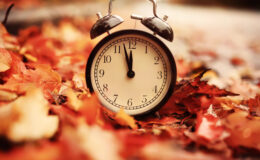Script –
What is up guys its Dr. Sami and Dr. Ashley and today we are going to talk about what to expect during your child’s first dental visit. (cut scene of instruments, radiographs, dancing) Taking your child to the dental office, especially for the first time, can be stressful if you don’t know what to expect & we hope that this video will help relieve some of that first visit anxiety. So lets jump right into it.
The AAPD recommends that your child visit the dentist at age 1 or when tooth eruption starts, whichever comes first. Typically, the dentist will take some radiographs of your child’s teeth & the amount of X rays depends on his or her age. Now you may be wondering are x-rays really needed? Well a lot of cavities are hidden between the teeth & requires x rays to be seen. Additionally, radiographs allow your dentist to see if the child’s adult teeth are properly developing or if there are any potential concerns
Many parents also ask, are they safe? The short answer is yes. There are multiple steps and factors that are employed to ensure patient safety. According to the American Dental Association, “the amount of radiation used to take 2-4 radiographs expose patients to about 0.005 units of radiation. By comparison, because radiation is part of our environment, people in the US, on average, are exposed to 3.2 units of radiation every year from just background sources. You also receive more radiation from just riding on an airplane for several hours. If radiographs are not completed and we wait until the cavities are large or cause pain, additional, more invasive, dental treatment may be required. It is also difficult for your dentist to give an accurate oral diagnosis without radiographs.
The dentist will also complete a clinical exam, meaning he or she will look inside your child’s mouth. This allows the dentist to further examine for any cavities, broken teeth, crowding, loose teeth, or infections. After the exam, commonly a child cleaning will be completed with either a rubber prophy cup or instruments, depending on the child’s age. The prophy cup is soft and is used to remove plaque. It might even give the child a tickling sensation. The scalers are harder and are used to remove calculus, if present. I know this looks scary, but your dentist will use a variety of techniques to describe instruments and procedures in a child-friendly way.
Finally, the dentist will apply fluoride to the tooth, which helps protect your kid from future cavities. The details of both fluoride and behavior management strategies are huge topics that we want to fully cover in upcoming videos. We hope you enjoyed this video and if you have any questions please leave them in the comment section below. We will be posting a series of videos regarding pediatric dental care in the upcoming weeks, so if you want to see more videos please subscribe & like our comment.





